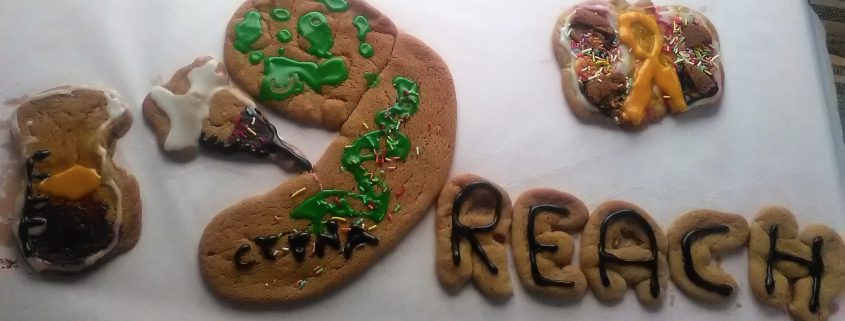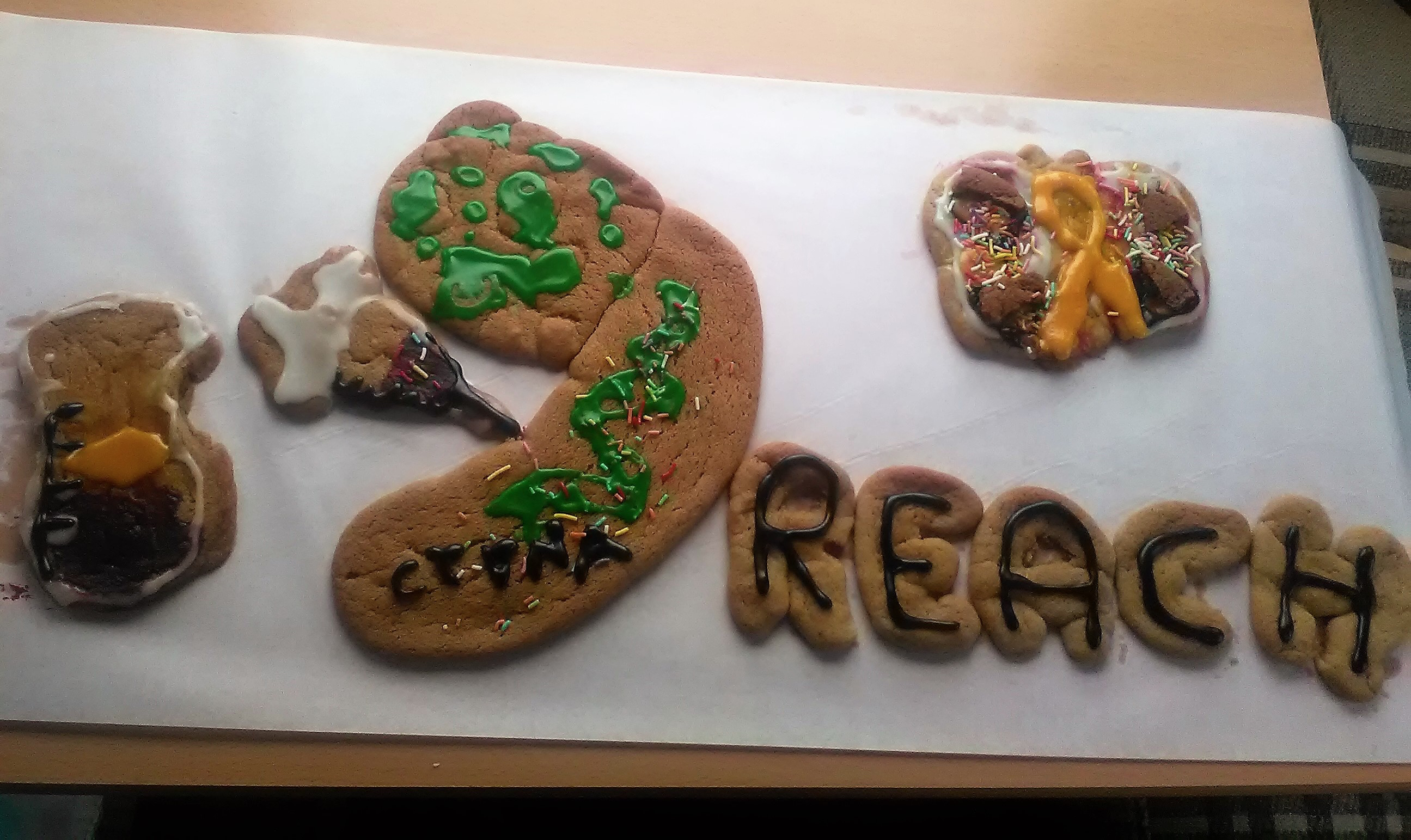Our winner in the Science Gingerbread Competition
With her inspired creation showing circulating tumour DNA, Roxana Halstead, from REACH child cancer, Christchurch, NZ, won our Science Gingerbread competition.
So, we may not have a lot of contestants, but we still had a worthy winner in our Science Gingerbread competition. Here Roxana Halstead describes her gingerbred in closer detail.
“This is to illustrate the circulating tumour DNA that is floating around the blood stream, starting from the tumour and the gathering of DNA with a syringe and plasma sample in a test pot.”
“We [at REACH child cancer] are backing Professor Guilford at Otago University and funding his child cancer research, enabling researchers to monitor treatment response by tracking the mutations specific to a child’s tumour. ctDNA can be used to improve outcomes for those children already diagnosed with cancer. Based upon a normal blood sample, ctDNA can give a window into the progress of the tumour treatment. If a tumour is not responding to a treatment, ctDNA will show this faster than current techniques.
I’d like to point out i’m not a baker and it’s obviously a talent I’m lacking in the icing department! This wonderful creation was made in a caravan kitchen with my two year old creating havoc so to actually get a end result is a Christmas miracle! ”
We say congratulations to Roxana and will send her a Kindle ebook!
Non-contestants
Dorota Paczesniak, Saskatoon, Canada: Seed development

“Seed development #gingerbreadscience. The ovule (part of the flower containing female reproductive cells) contains a fertilized egg. Initial cell divisions establish embryo polarity, i.e. where the shoot and root will be, later the cotyledons (embryonic leaves) become visible. The embryo grows, supported by nutrients in the surrounding endosperm tissue. The development of the embryo is arrested inside the seed until external conditions enable germination and growth of a new plant.”
Erik Bergman, Lund, Sweden: f(x)=log x … sort of
“It should be f(x)=log x, but as the y axis became a little crooked it looks more like an inverted exponential equation.”
- Claire Price of Crastina receives outreach award from Royal Society of Biology - October 25, 2020
- Agile Science student project at Brussels Engineering School ECAM: “We can’t wait to try it again!” - August 28, 2020
- Create an infographic in the Lifeology SciArt Infographic Challenge - June 16, 2020
- Adam Ruben – The scientist that teaches undergraduate students comedy - March 27, 2020
- Sam Gregson, Bad Boy of Science: “Comedy helps to bridge the gap” - March 10, 2020
- The Coolest Science Merchandise of 2019 - December 16, 2019
- Science Media Centre (UK) offers guide on dealing with online harassment in academia - November 26, 2019
- Agile project management taught to students and researchers at Karolinska Institutet - September 20, 2019
- Stefan Jansson: Improve your credibility! (Crastina Column, September 2019) - September 6, 2019
- The People’s Poet: Silke Kramprich, tech communicator - August 31, 2019







Leave a Reply
Want to join the discussion?Feel free to contribute!